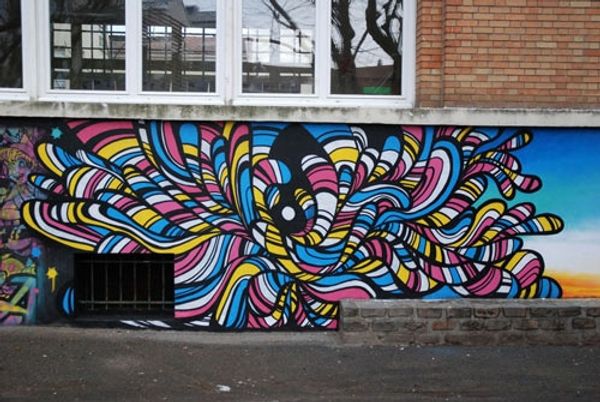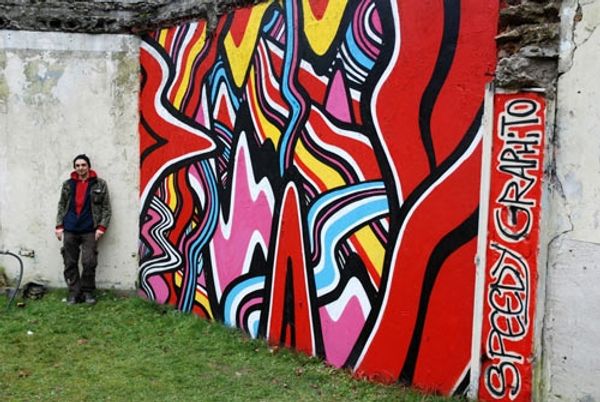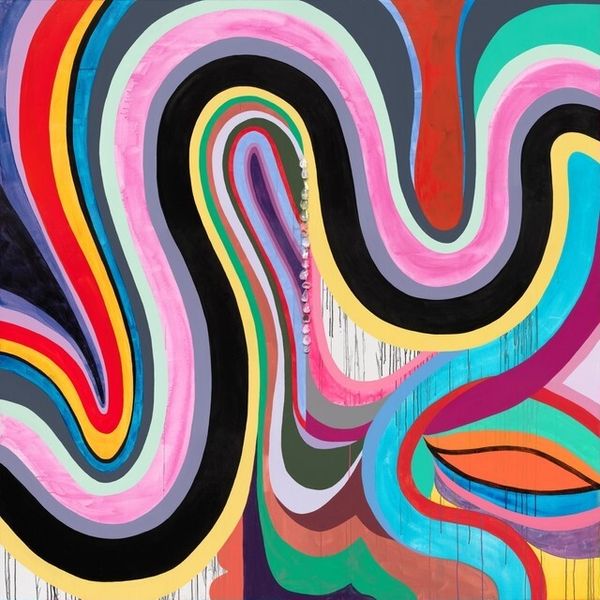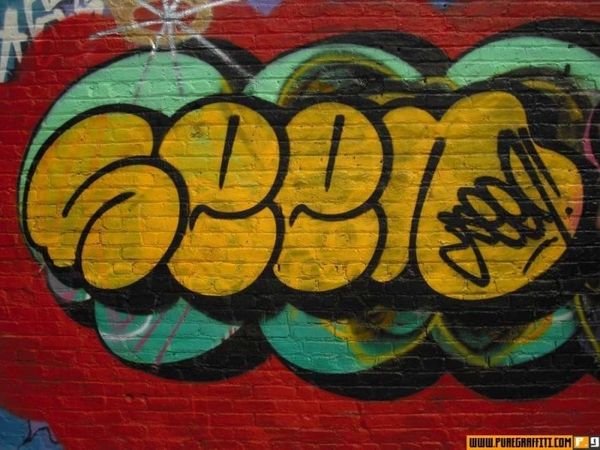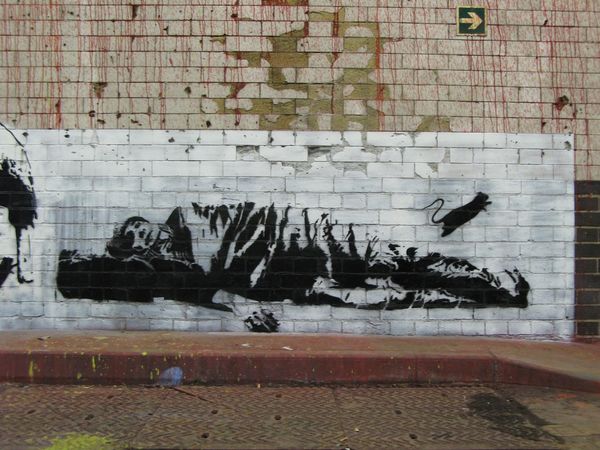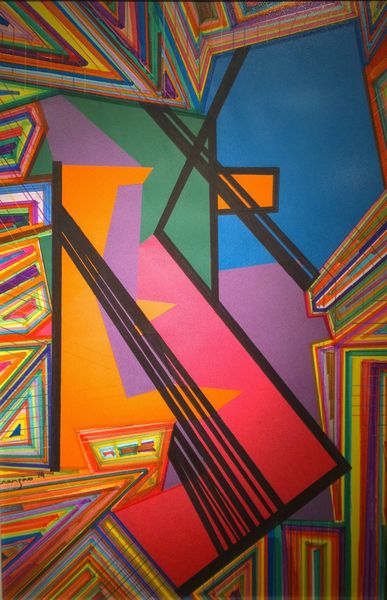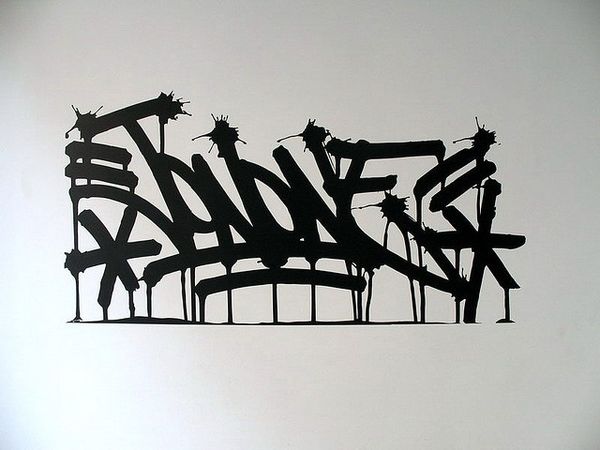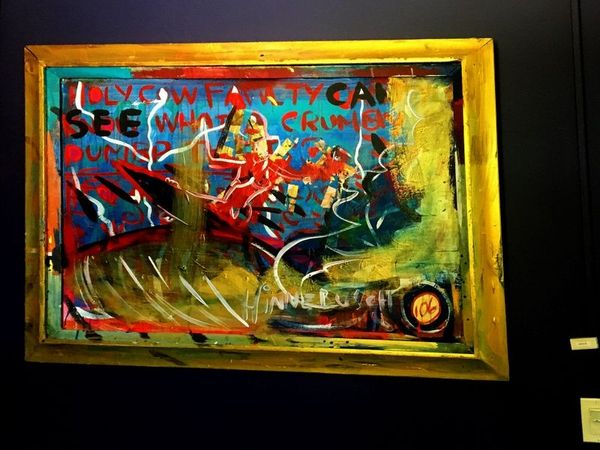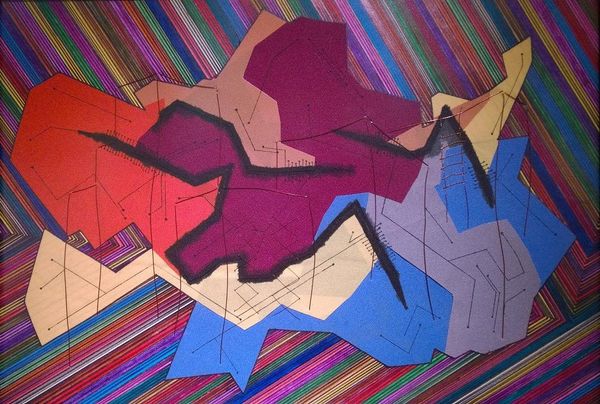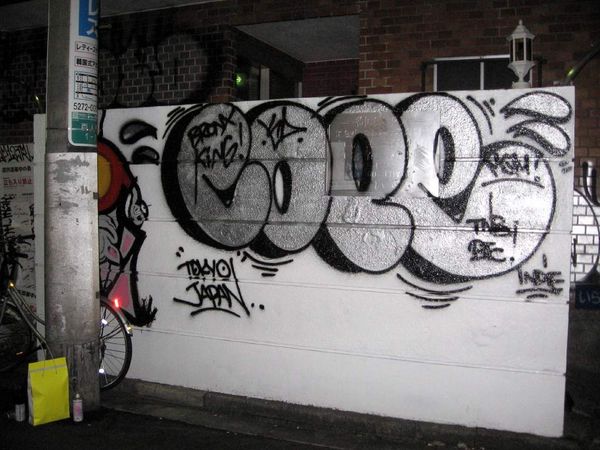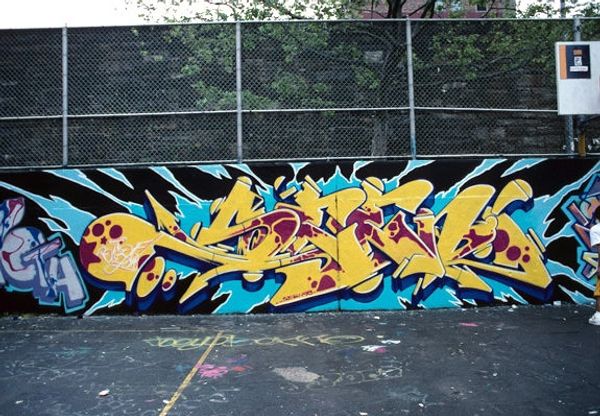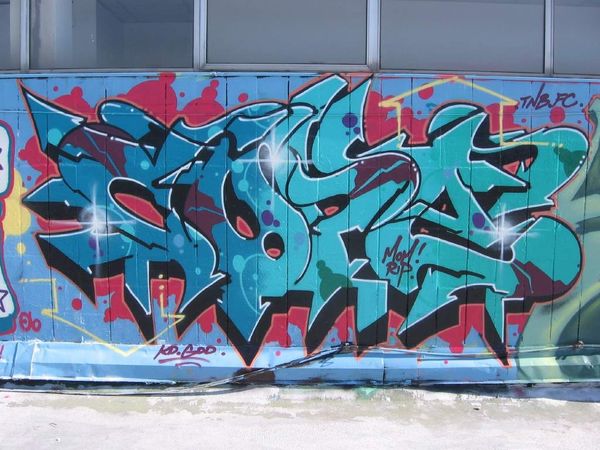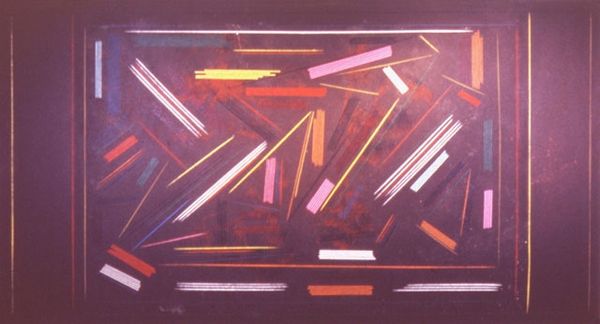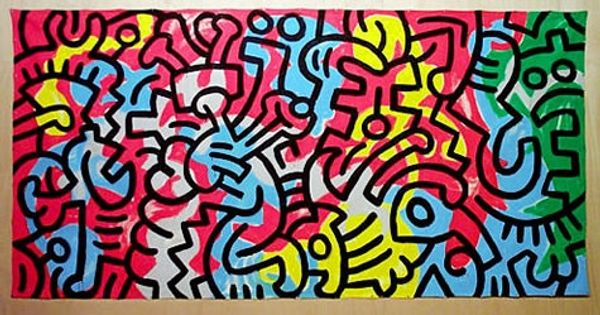
Copyright: Speedy Graphito,Fair Use
Editor: Here we have "163 rue des Pyrennées, Paris XX" created in 2011 by Speedy Graphito, a mural on what looks like a public wall. The colours are really striking, very vibrant with repeating bunny-like shapes. It’s playful, almost like children's graffiti but with this very polished, almost corporate line-work... How do you interpret the impact of this type of accessibility? Curator: The visual tension you noted is very much the point. Think about the socio-political context of street art. This mural, positioned in a public space, deliberately challenges the traditional spaces of art, like galleries and museums, and disrupts conventional ideas of who art is *for*. It begs the question, who controls public spaces and the imagery within them? Is it a democratisation of art or an appropriation? Editor: Appropriation, in what sense? Curator: In the sense that the artist is taking the visual language of the streets, traditionally associated with marginalized communities, and bringing a pop-art style gloss which speaks to more affluent audiences. But it’s a two-way street: Street art brings challenging socio-political discourse directly to new audiences outside institutional control, making this mural more accessible, visually arresting and, indeed, very democratic. Does it make you feel it’s successful? Editor: It does, actually. It feels more like a conversation than a declaration. Something that makes you think about who the message is for. I hadn't considered the politics of location so explicitly. Curator: Location, location, location. In art as in real estate, it’s everything. It is this friction between location, intended audience, and the establishment of art institutions that creates meaning, doesn’t it? Editor: Definitely, it all makes me see so much more beyond the surface now. Thanks.
Comments
No comments
Be the first to comment and join the conversation on the ultimate creative platform.
